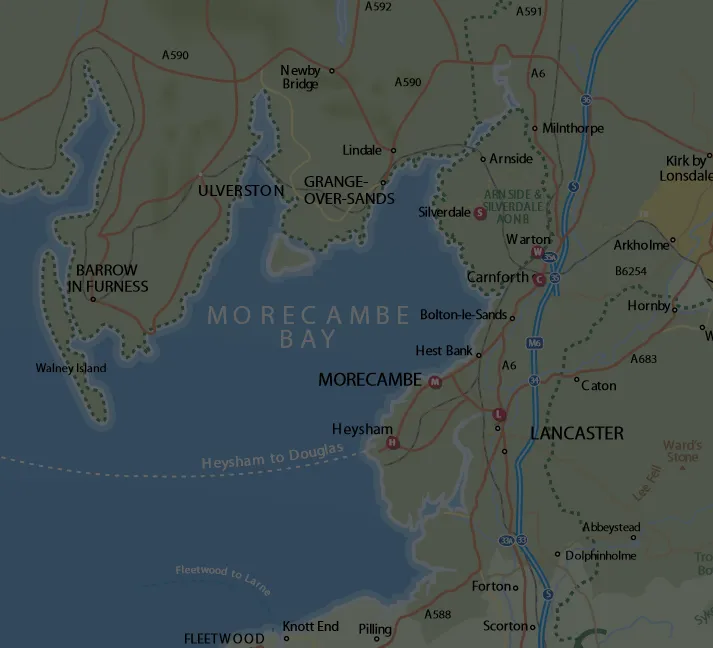
Morecambe Bay
Morecambe Bay
Morecambe Bay is a unique and fascinating place. Usually claimed to be the largest bay in the United Kingdom at over 200 square miles, with over half of this area revealed as sand at low tides that retreat for 7 miles, the resulting landscape of channels, quicksands and tidal races is indeed unique, and it is surrounded by some of the most stunning landscapes and sunsets in the British Isles as well as being one of the most important places in Europe for bird life, with many species of birds travelling thousands of miles to spend autumn and winter on the bay. The shipbuilders of Barrow in Furness, the power station at Heysham, the fishermen at Fleetwood, and the holiday makers in the resort of Morecambe itself, speak of old and new industry and leisure, while Furness Abbey and Cartmel Priory recall much older inhabitants.
We tend to think of Morecambe Bay as a shallow sandy estuary, and for the most part that's true – much of it is so shallow that the seabed is exposed at low tide and it's possible to walk right across the bay.
But beyond the sands and beneath the surface, the rivers that drain into the bay have carved out a huge underwater canyon known as the Lune Deep. Plunging down to about 70 metres below sea level, it's twice as deep as the surrounding areas of the seabed. This sudden change in depth creates a different environment from the rest of the bay, full of its own extraordinary sealife. Find out more in the following short video from Natural England.
The natural channel of the Lune Deep also creates the perfect highway for shipping. A series of buoys act as aids to navigation, guiding ships safely into the nearby harbours of Fleetwood and Glasson Dock.
